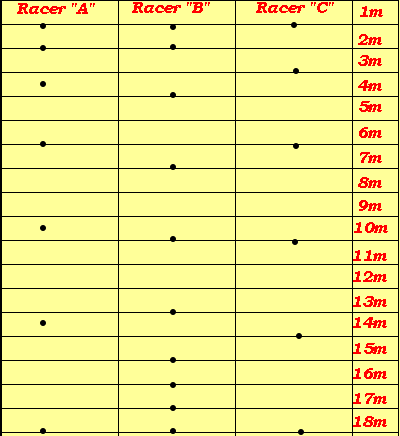Distance, speed and acceleration exercises
Three drag racers raced each other. Each racer was fitted with a special device that made a mark on the ground 10 times every second. Answer the following questions.
What is the greatest speed
for each racer?
What is the lowest speed of each racer?
What is the average speed of each racer?
How many seconds have elapsed between the first and last dots of racer "B"
Over what distance is the acceleration of racer "C" zero?
What is the acceleration of racer "C" over the first 3m of the race?
Clues. See your teacher for detailed solutions.


A car drips oil at the rate of one drop per second. It starts on the left side of the street and speeds towards the right where it crashes into a brick wall. Above is the pattern made by the vehicle on the straight road. Each square represents 10m.
a) What is the acceleration of the vehicle over the first 70m?
b) What is the speed of the vehicle upon impact at the end?
c) Was the driver accelerating or decelerating at the moment of impact?
d) What was the average speed of the vehicle?
Clues. If you are experiencing difficulties seek assistance from your teacher.